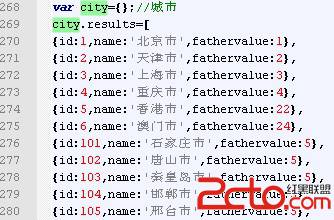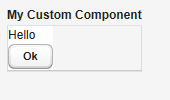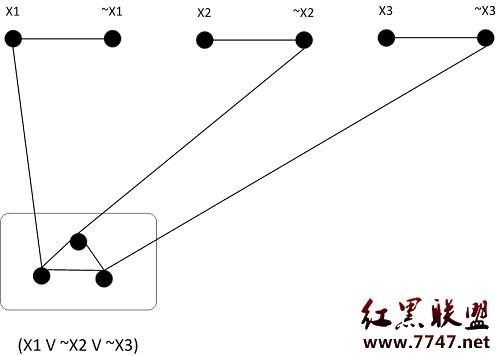三种遍历文件夹方法比较(PERL)
本贴对三种遍历文件夹方法比较。
1. 使用File::Find;
2. 递归遍历。(遍历函数为lsr)
3. 使用队列或栈遍历。(遍历函数为lsr_s)1.use File::Find
#!/usr/bin/perl -W
#
# File: find.pl
# Author: 路小佳
# License: GPL-2use strict;
use warnings;
use File::Find;my ($size, $dircnt, $filecnt) = (0, 0, 0);
sub process {
my $file = $File::Find::name;
#print $file, " ";
if (-d $file) {
$dircnt++;
}
else {
$filecnt++;
$size += -s $file;
}
}find(&process, .);
print "$filecnt files, $dircnt directory. $size bytes. ";2. lsr递归遍历
#!/usr/bin/perl -W
#
# File: lsr.pl
# Author: 路小佳
# License: GPL-2use strict;
use warnings;sub lsr($) {
sub lsr;
my $cwd = shift;local *DH;
if (!opendir(DH, $cwd)) {
warn "Cannot opendir $cwd: $! $^E";
return undef;
}
foreach (readdir(DH)) {
if ($_ eq . || $_ eq ..) {
next;
}
my $file = $cwd./.$_;
if (!-l $file && -d _) {
$file .= /;
lsr($file);
}
process($file, $cwd);
}
closedir(DH);
}my ($size, $dircnt, $filecnt) = (0, 0, 0);
sub process($$) {
my $file = shift;
#print $file, " ";
if (substr($file, length($file)-1, 1) eq /) {
$dircnt++;
}
else {
$filecnt++;
$size += -s $file;
}
}lsr(.);
print "$filecnt files, $dircnt directory. $size bytes. ";3. lsr_s栈遍历
#!/usr/bin/perl -W
#
# File: lsr_s.pl
# Author: 路小佳
# License: GPL-2use strict;
use warnings;sub lsr_s($) {
my $cwd = shift;
my @dirs = ($cwd./);my ($dir, $file);
while ($dir = pop(@dirs)) {
local *DH;
if (!opendir(DH, $dir)) {
warn "Cannot opendir $dir: $! $^E";
next;
}
foreach (readdir(DH)) {
if ($_ eq . || $_ eq ..) {
next;
}
$file = $dir.$_;
if (!-l $file && -d _) {
$file .= /;
push(@dirs, $file);
}
process($file, $dir);
}
closedir(DH);
}
}my ($size, $dircnt, $filecnt) = (0, 0, 0);
sub process($$) {
my $file = shift;
print $file, " ";
if (substr($file, length($file)-1, 1) eq /) {
$dircnt++;
}
else {
$filecnt++;
$size += -s $file;
}
}lsr_s(.);
print "$filecnt files, $dircnt directory. $size bytes. ";对我的硬盘/dev/hda6的测试结果。
1: File::Find
26881 files, 1603 directory. 9052479946 bytes.real 0m9.140s
user 0m3.124s
sys 0m5.811s2: lsr
26881 files, 1603 directory. 9052479946 bytes.real 0m8.266s
user 0m2.686s
sys 0m5.405s3: lsr_s
26881 files, 1603 directory. 9052479946 bytes.real 0m6.532s
user 0m2.124s
sys 0m3.952s测试时考虑到cache所以要多测几次取平均, 也不要同时打印文件名, 因为控制台是慢设备, 会形成瓶颈。
lsr_s之所以用栈而不是队列来遍历,是因为Perl的push shift pop操作是基于数组的, push pop这样成对操作可能有优化。内存和cpu占用大小顺序也是1>2>3.
CPU load memory
use File::Find 97% 4540K
lsr 95% 3760K
lsr_s 95% 3590K结论: 强烈推荐使用lsr_s来遍历文件夹。
=============再罗嗦几句======================
从执行效率上来看,find.pl比lsr.pl的差距主要在user上, 原因是File::Find模块选项较多,条件判断费时较多,而 lsr_s.pl比lsr.pl在作系统调用用时较少, 是因为递归时程序还在保存原有的文件句柄和函数恢复现场的信息,所以sys费时较多。 所以 lsr_s在sys与user上同时胜出是不无道理的。#!/usr/bin/perl -w
#读取目录下的目录,并且去除..和.目录以及隐藏的目录
opendir (DIR,"/root") or die "could not open /root";
@dots=grep {/^[^.]/ && -d "/root/$_" } readdir(DIR);
foreach (@dots) {
print "$_ ";
}
closedir DIR;#!/usr/bin/perl
# A small program to read the contents
# of a directory and print them to screen@dir_contents;
$dir_to_open="/home/sant/dcs/Teaching/Internet_Systems/Lectures";# open file with handle DIR
opendir(DIR,$dir_to_open) || die("Cannot open directory ! ");
# Get contents of directory
@dir_contents= readdir(DIR);
# Close the directory
closedir(DIR);
# Now loop through array and print file names
foreach $file (@dir_contents)
{
if(!(($file eq ".") || ($file eq "..")))
{
print "$file ";
}
}
补充:综合编程 , 安全编程 ,




